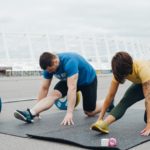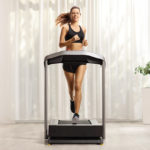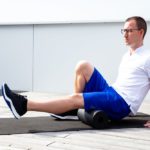High Intensity Training (HIIT), is a very popular and effective exercise. What if there were a better way to exercise? Learn how HIIT and strength training combine to create the ultimate workout. What is a HIIT exercise? As the name implies, HIIT workouts are short (typically less than one minute), but intense (>80% maximum). HIIT workouts are short (typically no more than 1 minute) but high-intensity (>80% max. Heart rate). This cycle of intervals and recovery is repeated for approximately 20 minutes. The ratio of intervals to recovery is usually 1:1 or 1:2. This means that, for every 30 second interval, the active recovery lasts between 30 and 60 secs. However, there are always exceptions. HIIT is a worldwide phenomenon. It was ranked as the top fitness trend from 2014 to 2018 and will remain in the top 10 by 2022[1]. Its popularity has increased, but its extreme variations, HIIT in particular, have led to concerns about increased injury rates[2]. While HIIT is a great way to improve cardiorespiratory health, other workouts will be more effective if your goal is to increase bone density and flexibility. High-intensity workouts are not the only way to achieve long-term health and fitness. This article explains the benefits of HIIT and strength training and how they can be combined for maximum effect. What are the advantages of HIIT training? Heart and lung fitness – HIIT has been proven to be an effective method of improving cardiorespiratory health. [3] [4] The afterburn effect – This is the result of an excess post-exercise consumption (EPOC), which occurs following a HIIT exercise. HIIT improves insulin sensitivity, body composition and muscle mass while reducing fat. Performance – HIIT improves maximal aerobic capacity (VO2 Max) and lactate tolerance (the point where lactic acid production is greater than removal). [7] [8] Both lactate threshold and VO2max are important factors in athletic performance. HIIT is faster than traditional steady-state exercises. [9] It was found that a single 4-minute exercise performed three times per week for 10 weeks increased VO2 Max by 10%. [10] A 1-minute workout can be just as effective as 45-minutes of moderate intensity exercise. [11] Is HIIT suitable for beginners? It is important to balance intervals and recovery times. Insufficient recovery can lead to fatigue, demotivation, and increased risk of injury and illness. Working out is not complete without recovery. Listen to your body. If you need to take a break during an exercise to catch your breathe, stop. You will gain endurance as you continue to progress and can push through discomfort. Heart Rate Monitors Heart rate monitors can be found in gym equipment, on a chest strap or even built into watches. The heart rate is a simple and accurate way to measure the intensity of a workout. Keep your HIIT intervals between 80 and 90% of maximum heart rate (HRmax) and active recovery between 60 to 70% HRmax. You’re not sure what that feels like? You can easily measure your effort with the Talk Test. Watch the Talk Test in our HIIT journey in the adidas Training App to learn how it works. Strength Training Strength training involves resistance, whether it’s in the form or free weights, bands of resistance, machines, or body weight. Adults who are inactive lose 5% of their muscle mass each decade. It is often accompanied by an increase in fat, bone loss and a slower metabolic rate. Strength training is an important part of a balanced workout program to increase bone density and build muscle. What are the advantages of strength training? Strength training increases metabolism due to energy requirements of building, repairing and maintaining muscles. The body continues to burn calories after your workout because of the elevated resting metabolic rate. Strength training improves bone density and lowers the risk of osteoporosis. This disease affects 4% men and 20% women over 50. Range of motion: Strength training can increase range of movement and flexibility just as much as stretching techniques. Injury prevention – Strength training helps to prevent injury by reducing fat and strengthening joints and connective tissues. Running Running is versatile and adds variety to your workout. Running doesn’t need to be intense or sweaty like HIIT. Running is a great workout for four reasons. What are the advantages of running? Running improves heart health and increases life expectancy. [18] Versatility: Running can improve cardiorespiratory power, anaerobic strength, and muscular endurance. Running is simple – you can work out anywhere and anytime without any equipment, even barefoot. Feel-good factor – The “runner’s low” is believed to be caused by endocannabinoids. Running outdoors can improve mood by exposing you to natural sunlight, and Vitamin D.[20] Balanced workouts go beyond simple gains. Combining high-intensity interval training, strength training, and running can target all five fitness components by using all three energy systems. Are you looking for a good place to begin? Below is a workout plan. 7-Day Workout Schedule This weekly schedule includes three simple exercises with lots of recovery and rest. Start each workout with a warming-up, and finish with a cooling-down. Day 1: HIIT Workout Day 2: Recovery Day 3: Strength training Day 4: Relaxation Day 5: Running Day 6, 7: Rest Day 1, 12-minute HIIT Exercise Complete each of the exercises below for 30 secs at 80-90%HRmax. Each exercise should be followed by 60 seconds of active recuperation at 60-70%HRmax. Active recovery can be achieved by using Walking High Knees, or Jogging in place. Repeat the four rounds of exercises. Total: 8 intervals within 12 minutes. Plie Jump Squats This variation of the plie jump is great for raising your heart rate.
2. Mountain Climbers Mountain Climbers is a full-body exercise that stimulates all major muscle groups.
3. Lateral Jump Touchdown Lateral jumping adds plyometric strength to your glutes and hamstrings.
4. Knee Tuck crunches These crunches, also known as seated tucks of the knee, work your triceps and shoulders.
Explore the HIIT Journey app in adidas Training to find other great HIIT exercises. Follow these guidelines for an effective strength training workout: Perform 8-10 exercises that target the major muscle groups in the arms, chest and back. Also, include abdominals and legs. Completing 3 sets of 10 reps per exercise. Lift and lower with control – 2 second up, 2 second down. Each exercise has a harder and a softer direction. It’s harder for you to do a pushup than it is to lower yourself to the floor. Exhale more when you are working harder, and inhale more during the “easier part”. The weight of each exercise should be adjusted so that the final repetition is difficult. Enjoy the creativity and freedom of fartlek. Fartlek is a “speed game” that involves running a distance at varying intensities, interspersed by periods of faster-paced running. Fartlek is a continuous, unstructured running style. You can run fast or slowly depending on your mood and the environment. You can use hills and landmarks to inspire you. For example, sprinting for five lampposts. It’s fun to play with speed and develop your aerobic and anaerobic systems. Start with the following workout: Increase heart rate and body temperatures with a low-intensity 5-minute warm up. Run continuously for 10 minutes with low-moderate intensity. Let your mood and landscape inspire your pace. Include at least 30 second at a rapid pace three times. Follow each speed interval by 30 minutes of low intensity. Jog or walk as necessary. Cool down with 5-minute low-intensity walk. HIIT workouts improve your cardiovascular health and boost metabolism. Strength training helps to maintain joint and bone health while preventing injury. Running is a great cardio exercise that you can do anywhere. Combining all three will maximize your health. Listen to your body, and adjust intensity according to your goals and level. Start our HIIT journey in adidas Training to get a comprehensive introduction to high-intensity interval training.











